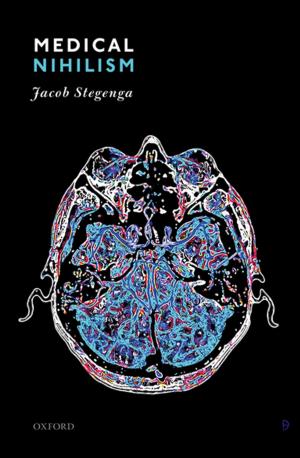The Roman Martyrs
Introduction, Translations, and Commentary
Nonfiction, Religion & Spirituality, Christianity, Church, Church History| Author: | Michael Lapidge | ISBN: | 9780192539366 |
| Publisher: | OUP Oxford | Publication: | December 8, 2017 |
| Imprint: | OUP Oxford | Language: | English |
| Author: | Michael Lapidge |
| ISBN: | 9780192539366 |
| Publisher: | OUP Oxford |
| Publication: | December 8, 2017 |
| Imprint: | OUP Oxford |
| Language: | English |
The Roman Martyrs contains translations of forty Latin passiones of saints who were martyred in Rome or its near environs, during the period before the 'peace of the Church' (c. 312). Some of the Roman martyrs are universally known-SS. Agnes, Sebastian or Laurence, for example-but others are scarcely recognized outside the ecclesiastical landscape of Rome itself. Each of the translated passiones is accompanied by an individual introduction and commentary; the translations are preceded by an Introduction which describes the principal features of this little-known genre of Christian literature, and are followed by five Appendices which present translated texts which are essential for understanding the cult of Roman martyrs. This volume offers the first collection of the Roman passiones martyrum translated into a modern language. They were mostly composed during the period 425-675, by anonymous authors who were presumably clerics of the Roman churches or cemeteries which housed the martyrs' remains. It is clear that they were composed in response to the explosion of pilgrim traffic to martyrial shrines from the late fourth century onwards, at a time when authentic records (protocols) of their trials and executions had long since vanished, and the authors of the passiones were obliged to imagine the circumstances in which martyrs were tried and executed. The passiones are works of fiction; and because they abound in ludicrous errors of chronology, they have been largely ignored by historians of the early Church. Although they cannot be used as evidence for the original martyrdoms, they nevertheless allow a fascinating glimpse of the concerns which animated Christians during the period in question: for example, the preservation of virginity, or the ever-present threat posed by pagan practices. As certain aspects of Roman life will have changed little between the second century and the fifth, the passiones shed valuable light on many aspects of Roman society, not least the nature of a trial before an urban prefect, and the horrendous tortures which were a central feature of such trials. The passiones are an indispensable resource for understanding the topography of late antique Rome and its environs, as they characteristically contain detailed reference to the places where the martyrs were tried, executed, and buried.
The Roman Martyrs contains translations of forty Latin passiones of saints who were martyred in Rome or its near environs, during the period before the 'peace of the Church' (c. 312). Some of the Roman martyrs are universally known-SS. Agnes, Sebastian or Laurence, for example-but others are scarcely recognized outside the ecclesiastical landscape of Rome itself. Each of the translated passiones is accompanied by an individual introduction and commentary; the translations are preceded by an Introduction which describes the principal features of this little-known genre of Christian literature, and are followed by five Appendices which present translated texts which are essential for understanding the cult of Roman martyrs. This volume offers the first collection of the Roman passiones martyrum translated into a modern language. They were mostly composed during the period 425-675, by anonymous authors who were presumably clerics of the Roman churches or cemeteries which housed the martyrs' remains. It is clear that they were composed in response to the explosion of pilgrim traffic to martyrial shrines from the late fourth century onwards, at a time when authentic records (protocols) of their trials and executions had long since vanished, and the authors of the passiones were obliged to imagine the circumstances in which martyrs were tried and executed. The passiones are works of fiction; and because they abound in ludicrous errors of chronology, they have been largely ignored by historians of the early Church. Although they cannot be used as evidence for the original martyrdoms, they nevertheless allow a fascinating glimpse of the concerns which animated Christians during the period in question: for example, the preservation of virginity, or the ever-present threat posed by pagan practices. As certain aspects of Roman life will have changed little between the second century and the fifth, the passiones shed valuable light on many aspects of Roman society, not least the nature of a trial before an urban prefect, and the horrendous tortures which were a central feature of such trials. The passiones are an indispensable resource for understanding the topography of late antique Rome and its environs, as they characteristically contain detailed reference to the places where the martyrs were tried, executed, and buried.















